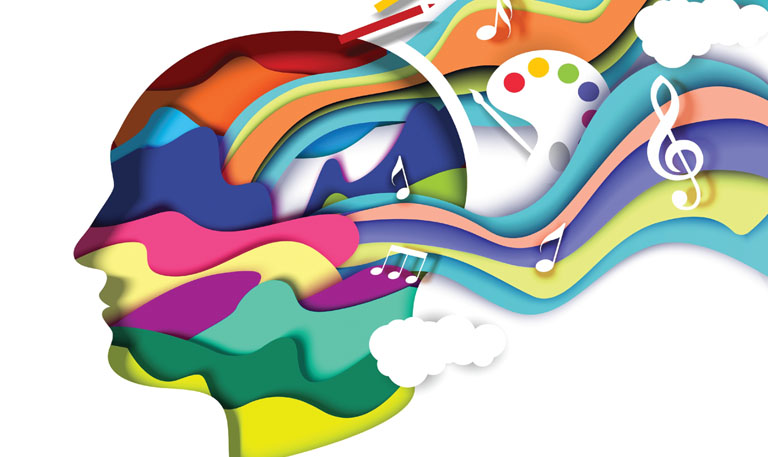Henry Draell lives with dementia and was severely withdrawn and non-communicative until awakened by a recording of Cab Calloway’s music. In a remarkable YouTube excerpt from the 2014 documentary, Alive Inside: A Story of Music and Memory, Henry is fitted with an iPod and headphones, and when the music begins his eyes snap open. He begins to jam with the music. When asked what he is feeling, he speaks eloquently about the joy and wonder of music.
Philosopher Immanuel Kant called music “the quickening art,” and the music affects a kind of magical transformation on Henry. His dementia is set aside. A man who wasn’t there in one moment is suddenly very present, very alive, very much a singular being with personality and passion. He had appeared lost to his dementia but was very much alive inside, and music woke him from his mental slumber.
The power of music is evident to anyone who watches the video of Henry. We know that it works but don’t really know why or how it works. How does music perform this magic? Why is it that the arts, in general, possess this transformative power. I’ve been struggling with these questions for close to two decades now.
My early thinking on the subject was influenced by the work of Ellen Dissanayake and Denis Dutton,** who argue that aesthetic sensibilities are evolved instincts possessed by all human beings. The human capacity to make art and appreciate beauty, they believe, have been shaped by natural selection. An aesthetic sensibility is a fundamental characteristic of human behavior. We are hard-wired for art.
As the field of neuroscience blossomed in the 1990s, researchers began exploring the neurological basis for aesthetic experiences, seeking to understand how the human brain processed art and how art, in turn, shapes the nature of individual brains. Neuroscientist Semir Zeki dubbed this new sub-field “neuroaesthetics” in 1999. The evolutionary perspective of art was complemented by a deeper understanding of how the human brain works and why it is so sensitive to artistic expression.
The scientific study of the arts has been robust but disorganized. The NeuroArts Blueprint Initiative, launched in 2019, is striving to wed the disciplines of science, technology, and the arts. Their mission is to “cultivate an ecosystem for neuroarts—the transdisciplinary study of how the arts and aesthetic experiences measurably change the body, brain, and behavior, and how this knowledge is translated into specific practices that advance health and well-being around the world.”
I am delighted that I will be able to contribute to this cultivation of a neuroarts ecosystem. I’ve been invited to serve on a new Health and Science Committee set up by Encore Creativity, the nation’s largest choral singing group for older adults. Encore’s goals are to use our growing understanding about science of the arts to improve the health of their singers and to help them flourish as they age.
With this new assignment, I need to update and expand my thinking about the power of the arts to promote human well-being. Here are some of the points that I find compelling and provocative:
-
The power of the arts derives from basic physics. Art is grounded in sensory stimuli that, at its base, are forms of energy. When energy of any kind enters the brain, it has the power to alter the structure and function of our mind.
Susan Magsamen, co-director of the NeuroArts Blueprint, makes the same point in her new book, Your Brain on Art. She says that “all stimuli that we encounter—visual, auditory, somatosensory, gustatory, olfactory, and others—change the structure and function of cells within our brains and bodies. And they do so in fundamental ways.”
-
We are hard-wired for the arts. We thrive as a species because of our creativity and adaptability. We have used the arts to shape our environments, and the environments we create, in turn, shape our thoughts, emotions, and behaviors.
-
The arts engage multiple types of energy that interact holistically with the multiple systems that animate our bodies and brains. The arts, therefore, are particularly effective at addressing complex, multi-faceted disorders and diseases.
-
The arts are fun. We enjoy the arts. Art is play. The arts are intimately linked to positive emotions. This alone contributes to flourishing. But further, the therapeutic benefits embedded in the arts pleasure are easily endured. We are happy to take the medicine on a regular basis because it’s so enjoyable and fulfilling.
-
The arts can inspire wonder and awe, pulling us out of our egocentric self-absorption, and sweeping us into a mystical sense of unity with forces grander than our individual selves.
Taking this fifth point to heart, I suspect we will never fully understand why the arts are such powerful healers. Often, just recognizing that they work is enough. We shouldn’t forgo effective treatments just because we don’t understand how or why they work. How did the voice of Cab Calloway pull Henry out of his dementia?
It’s magic! That may be all the answer we really need.
Michael C. Patterson helped provide funding for Gene Cohen’s Creative Aging research when running AARP’s Staying Sharp brain health program. With Cohen, Patterson started and led the board research committee for the National Center for Creative Aging. Patterson now produces and hosts the MINDRAMP podcast, and publishes a weekly newsletter featuring new research reports that shed light on issues pertaining to successful aging.
Read more by Michael C. Patterson
More Resources:
Listen to Michael’s MINDRAMP podcast interviews with Dan Cohen, the champion of personalized music featured in Alive Inside.
Watch the full Alive Inside documentary at https://www.youtube.com/watch?v=x9IHUPamCB4
** Ellen Dissanayake wrote What is Art For? (1988) and Homo Aestheticus: Where Art Comes from and Why? (1992). Denis Dutton wrote The Art Instinct: Beauty, Pleasure, and Human Evolution (2010).
Read Gene Cohen’s Creative Aging research at https://www.arts.gov/sites/default/files/NEA-Creativity-and-Aging-Cohen-study.pdf.


